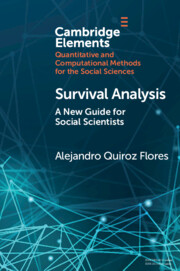Element contents
Survival Analysis
Published online by Cambridge University Press: 03 May 2022
Summary
Keywords
- Type
- Element
- Information
- Online ISBN: 9781009053594Publisher: Cambridge University PressPrint publication: 26 May 2022
References
- 2
- Cited by

